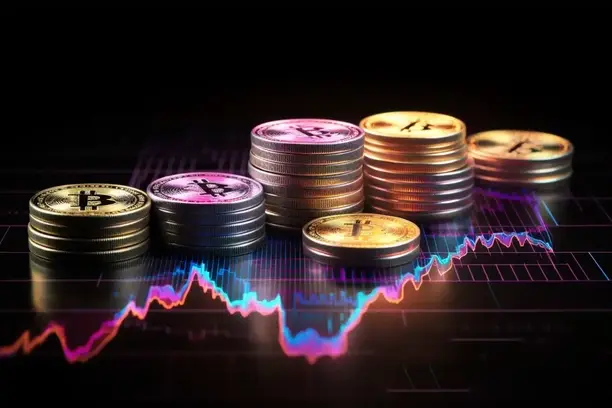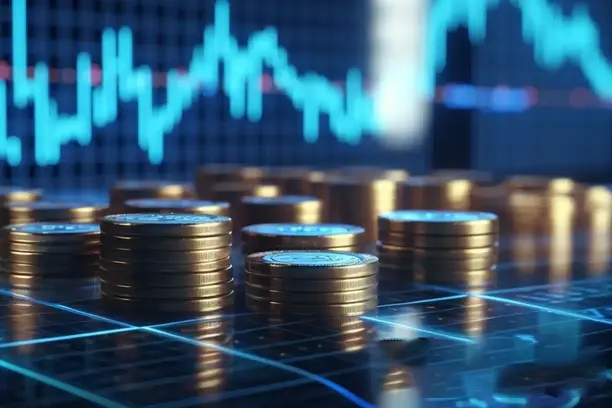Bitcoin buy and sell orders are key factors that influence price fluctuations in the market. These market signals help investors gain insight into market trends and make more informed trading decisions. In this article, we will analyze what Bitcoin buy and sell orders are and how they affect the market to help investors better understand and grasp the core elements of Bitcoin trading, thus improving the accuracy of their trading strategies.

Bitcoin Buying and Selling: Basic Concepts Explained
In the cryptocurrency market, especially Bitcoin trading, "buy orders" and "sell orders" are the most basic but crucial market concepts. Simply put, a buy order is a demand in the market to buy Bitcoin at a specific price, while a sell order is a supply of Bitcoin to sell at a specific price. The price of Bitcoin usually stabilizes when there is a balance between the number of buy orders and sell orders, but when there is a strong force of either buy or sell orders, the price can fluctuate significantly. Understanding the relationship between the two can help investors determine the direction of the market.
On Bitcoin exchanges, buy orders are usually expressed as limit orders, which are traders' willingness to buy Bitcoin at a certain price or lower, and sell orders, which are the counterpart of limit orders, which are traders' desire to sell Bitcoin at a certain price or higher. The accumulation of these limit orders creates what is known as "order depth," which is the sum of the buy and sell orders currently outstanding in the market. This depth data helps investors determine the current supply and demand in the market.
How Buy and Sell Orders in the Bitcoin Market Affect Price
The market price of Bitcoin is determined by the interplay of buying and selling forces. When there are more buyers in the market, demand outweighs supply, which drives the price of Bitcoin up. On the other hand, when the sellers are dominating the market and there is too much supply, the price will go down. The power of buyers versus sellers is a dynamic process that is often influenced by a number of factors, including macroeconomic conditions, investment sentiment in the Bitcoin market, and exchange activity.
Take the exchange's Order Book as an example. When you look at buy and sell orders within a certain price range, you'll see that the lower the price, the more buy orders there are, which means that there is a strong demand for Bitcoin in the market; and when the price of the orders gradually rises, it means that the sellers are looking to sell Bitcoin at a higher price. In this game of buying and selling forces, the final price is constantly adjusted according to supply and demand.
Example:
Assume that the current market price of Bitcoin is $30,000 and there are a large number of buy orders at $29,800 and more sell orders above $30,200. If a large number of buy orders enter the market, it could drive the price up above $30,200 until the strength of selling in the market begins to dampen the price increase.

Market Signal Interpretation: Key Indicators for Buy and Sell Orders
When trading Bitcoin, investors need to learn to read the market signals of buy and sell orders. These signals can often be observed through order book depth data and correspond to different market trends. For example, when there is a large number of buy orders in the market, especially if the price of the orders is moving upwards, this is usually an indication of a more optimistic market sentiment, which may lead to a price increase. If there is a gradual increase in the number of sell orders, especially if they are concentrated in a certain price range, it may mean that there is a risk of a pullback in the market.
Volume in the market is also an important market signal. Volume reflects the level of activity in the market. Any unusual fluctuation in volume (e.g. a sharp increase in volume) may signal a sudden change in market sentiment and investors need to be vigilant. Generally speaking, a large number of buy orders and high volume at the same time, is often a bull market signal; while a large number of sell orders and high volume may signal the arrival of a bear market.
How to use buy and sell orders to make trading decisions
Understanding Bitcoin buy and sell orders can help investors make more scientific trading decisions. For example, if you see a steady increase in the number of buy orders in the market and the volume of trades continues to climb, consider buying, as this is usually a sign of strong demand in the market and the price may be on the rise. Conversely, if you see a large number of selling orders and the price begins to fall below important support levels, then this may be a sell signal and investors may consider reducing or stopping their positions.
The selection of Limit Orders and Market Orders is also based on buy and sell signals in specific operations. Limit orders allow you to set a desired trade price that will be automatically executed when the market price reaches that level. If the market is volatile, you may choose a market order, which is a trade that is executed immediately at the current market price, ensuring speedy entries and exits.
Example:
Suppose you observe that in the Bitcoin market, buy orders on a particular exchange have greater support at $29,800, while sell orders are concentrated near $30,200. At this point, if the market price is close to $29,800 and buying is strong, you can choose a limit buy order to enter the market near $29,800; if the price breaks above $30,200 and continues to move higher, you can choose a market order to chase the price higher.
Bitcoin Market Sentiment and News Impact on Buy and Sell Orders
Sentiment in the Bitcoin market is extremely sensitive and volatile. Changes in market sentiment can change the ratio of buy orders to sell orders in a short period of time. For example, macroeconomic factors, policy changes, technological innovations, or large-scale market news can quickly affect investor sentiment and therefore the number of buy and sell orders.
The approval of a Bitcoin ETF or a change in government regulatory policy usually triggers a sharp reaction in the market. For example, when a Bitcoin ETF is approved for trading, a large number of institutional investors in the market will enter the market to buy Bitcoin, leading to a surge in buying; whereas when certain countries announce a ban on cryptocurrency trading or tighten regulation, selling will increase rapidly and the price may fall rapidly.
Therefore, when trading Bitcoin, investors should not only pay attention to the changes in buy and sell orders, but also pay close attention to market news so as to capture possible market turning points.
Conclusion: Mastering Buy and Sell Orders to Enhance the Accuracy of Your Trading Strategy
In the Bitcoin market, buy orders and sell orders are the basis of market operations, and understanding the dynamics of these two is crucial for investors. By interpreting the depth of buying and selling, volume and market sentiment in the order book, investors can better grasp the market winds and make trading decisions accordingly. Whether it is a short term trade or a long term hold, the sensitivity to buy and sell orders will help improve the success rate and risk control of your trading strategy. In this volatile market, having clear market insights is the key to stable returns.














